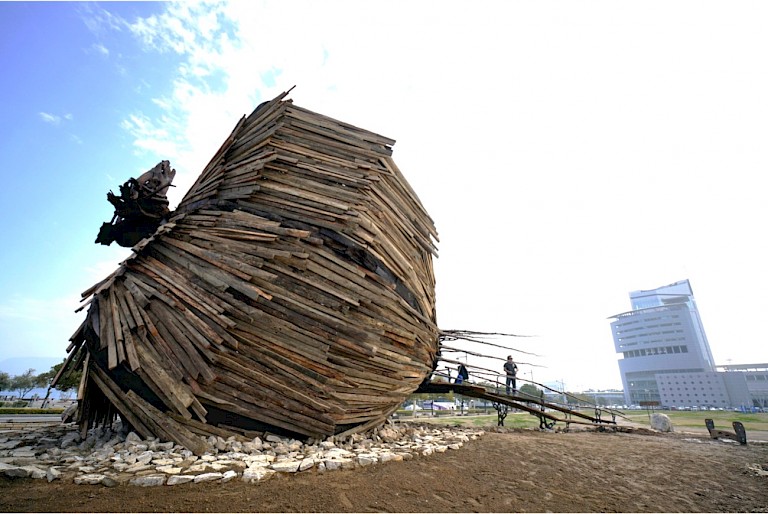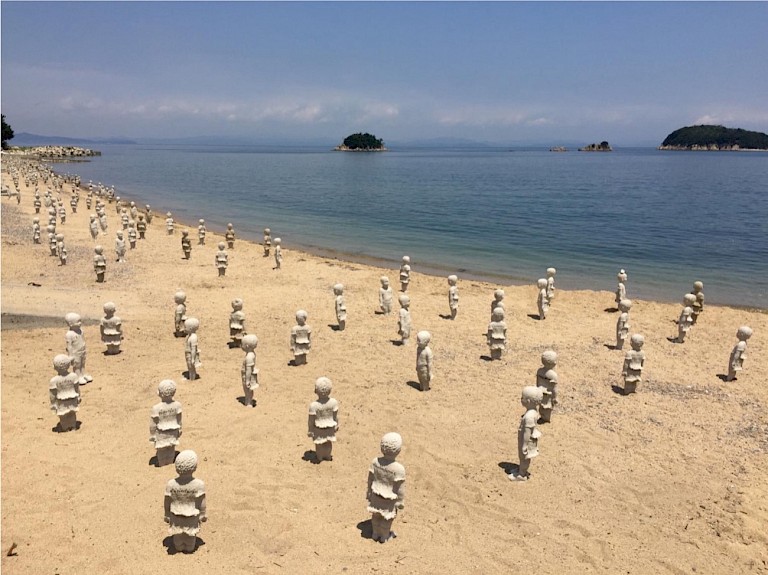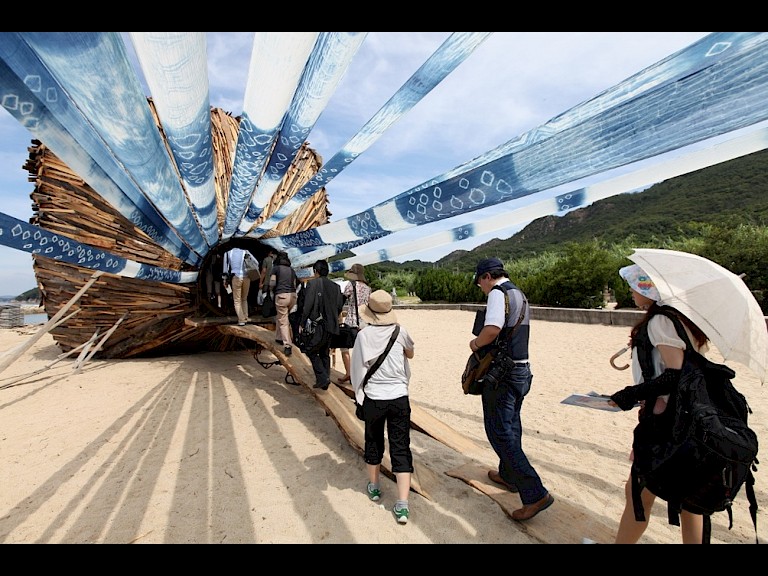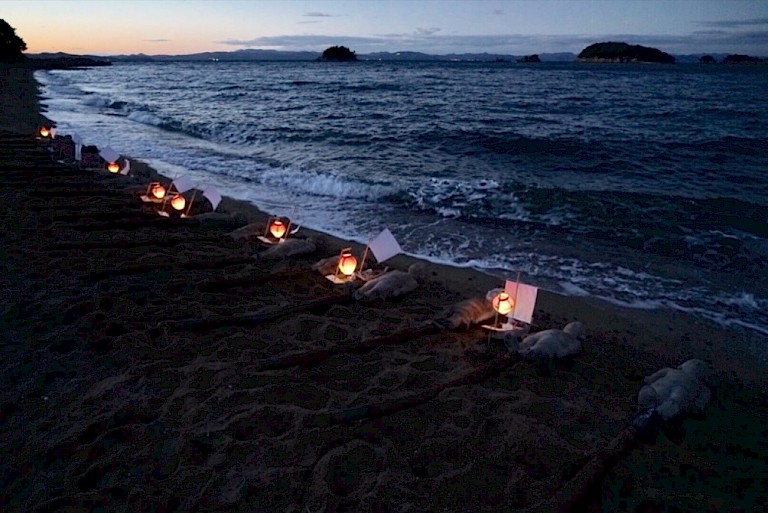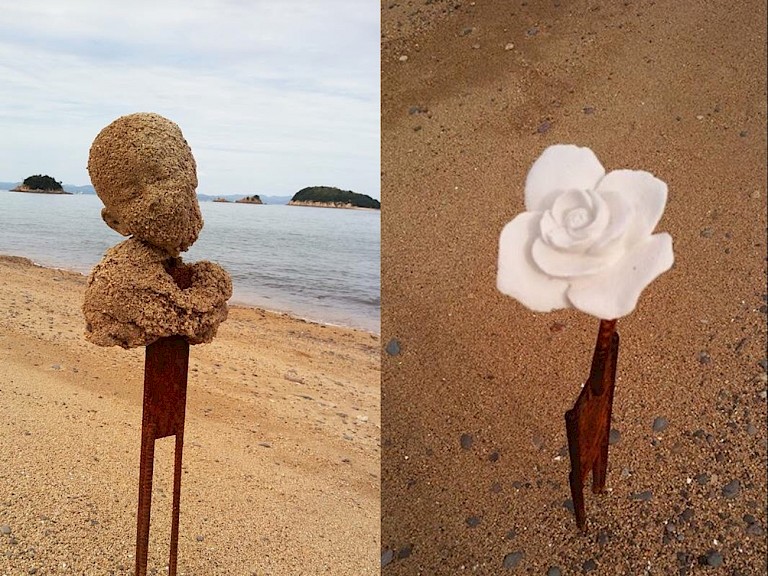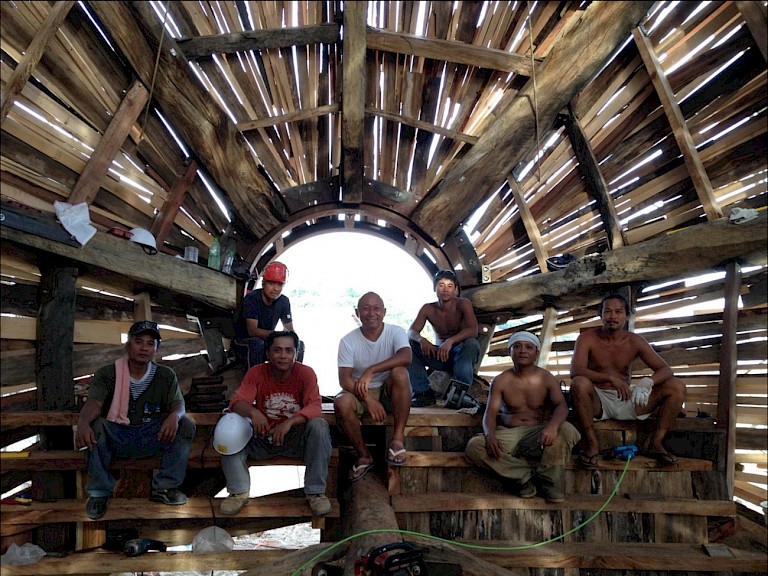



Both of these artworks, created in 2013 and 2016 for the Setouchi Art Festival, became the most discussed pieces of their respective years. The former became the cover of the festival's handbook and the subject of curriculum content in Japanese elementary school textbooks. The latter was became part of the curriculum in Japanese middle and high schools, and featured in NHK special reports (Japan's only public media organisation).
The humanistic and historical-cultural messages conveyed in these artworks have been an inspiration to people in the Setouchi region who were facing a decline due to depopulation. These works have also moved all visitors by highlighting the journey of human civilisation and communication.
These two artworks are part of the Crossing Borders series, and starting in 2009, Crossing Borders became the main theme for Shuen-Long Lin's works at these two Japanese art festivals. The accompanying "subtitles" for this series are Village (2009), Mountain (2012), Sea (2013), Tides (2016), Bonds (2018), and Waves (2019).
The word "Crossing" in Crossing Borders represents Shuen-Long Lin's personal journey of physically crossing different countries and locations while learning and absorbing the history and wisdom of people living in different regions. His humble personality allows him to better understand and empathise with others, treating friends from all corners of the world as subjects of his learning. His works do not require complex academic theories or discussions; they are designed to elicit empathy from nearly everyone, regardless of whether that empathy evokes happiness, sadness, or contemplation.
In Crossing Borders: Sea, the discussion revolves around the relationship between the ocean and human emotions. Shuen-Long Lin connects the shared memory of people living in different countries and regions through the drifting of a single seed, aiming to promote mutual understanding and communication among humanity.
In Crossing Borders: Tides, the artwork symbolszes every life on Earth and the destinies they face through 196 child statues. The children's statues represent their "existence," but under the assault of ocean tides and storms, "death" is an inevitable fate for these children. The 196 children made from sea sand, seemingly isolated on the beach, were originally part of a larger group, suggesting that they were companions to one another. The disappearance of their physical bodies is not a true death but a form of "transformation." After the statues erode, a porcelain white rose emerges. These roses symbolise an eternal and peaceful hope, reflecting Shuen-Long Lin's contemplation of our currently "polluted" world. He hopes for a future where we can return to a pure, fragrant, and "sacred" world.
These two works have not only become the focal points of art festivals but also continue as a testament to an idea. There have been requests for permanent preservation by local residents (along with inclusion in school curriculum).
Crossing Borders - Sea returned to Taiwan for a series of activities in the following year, 2014, and in 2016, becoming a permanent public artwork in the port district of Takamatsu City.
Crossing Borders - Tide has touched the hearts of many, making people realise the importance of world peace. There is currently an exhibition project in progress in Europe, and we hope that more people can appreciate this piece.
